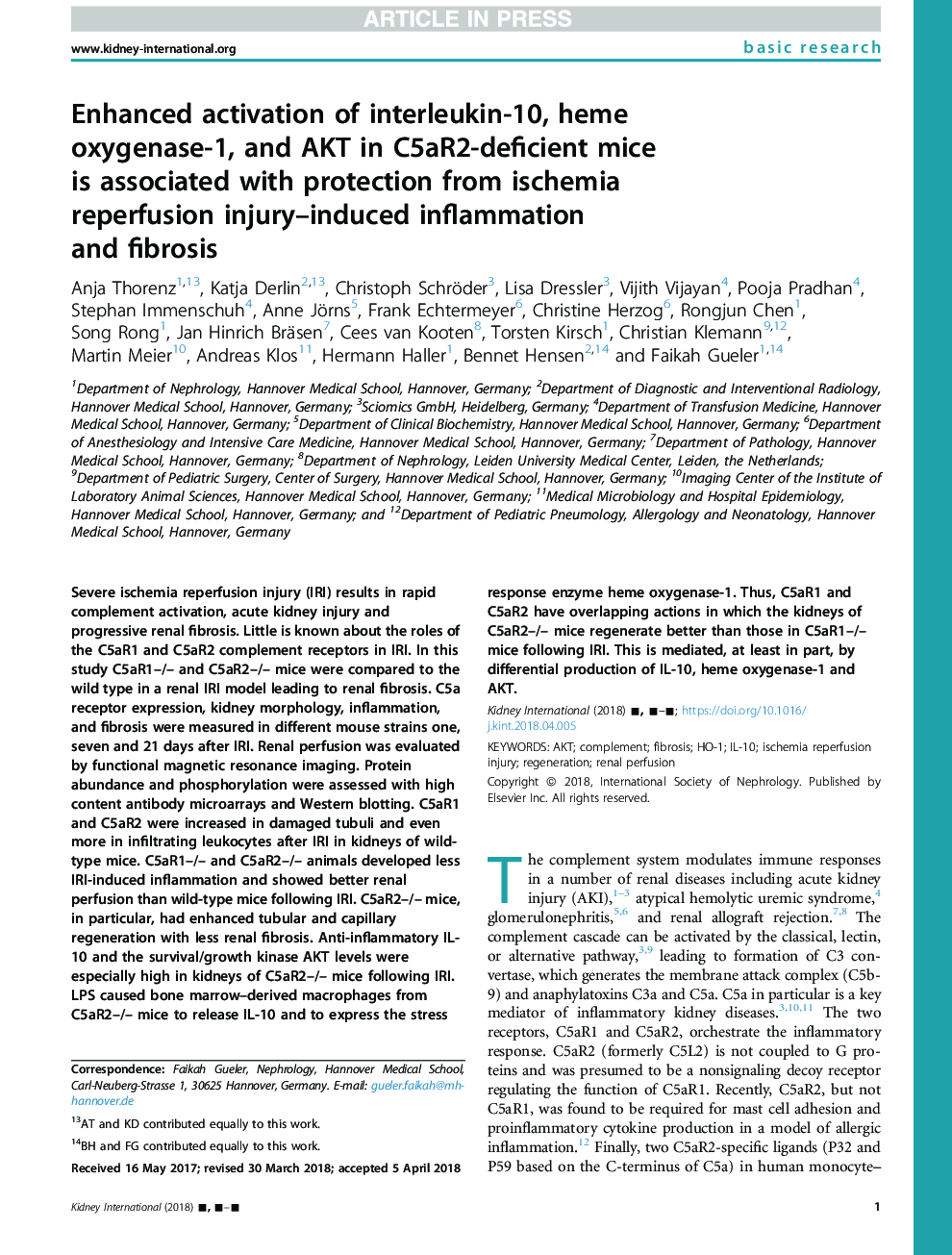| Article ID | Journal | Published Year | Pages | File Type |
|---|---|---|---|---|
| 10219529 | Kidney International | 2018 | 15 Pages |
Abstract
Severe ischemia reperfusion injury (IRI) results in rapid complement activation, acute kidney injury and progressive renal fibrosis. Little is known about the roles of the C5aR1 and C5aR2 complement receptors in IRI. In this study C5aR1-/- and C5aR2-/- mice were compared to the wild type in a renal IRI model leading to renal fibrosis. C5a receptor expression, kidney morphology, inflammation, and fibrosis were measured in different mouse strains one, seven and 21 days after IRI. Renal perfusion was evaluated by functional magnetic resonance imaging. Protein abundance and phosphorylation were assessed with high content antibody microarrays and Western blotting. C5aR1 and C5aR2 were increased in damaged tubuli and even more in infiltrating leukocytes after IRI in kidneys of wild-type mice. C5aR1-/- and C5aR2-/- animals developed less IRI-induced inflammation and showed better renal perfusion than wild-type mice following IRI. C5aR2-/- mice, in particular, had enhanced tubular and capillary regeneration with less renal fibrosis. Anti-inflammatory IL-10 and the survival/growth kinase AKT levels were especially high in kidneys of C5aR2-/- mice following IRI. LPS caused bone marrow-derived macrophages from C5aR2-/- mice to release IL-10 and to express the stress response enzyme heme oxygenase-1. Thus, C5aR1 and C5aR2 have overlapping actions in which the kidneys of C5aR2-/- mice regenerate better than those in C5aR1-/- mice following IRI. This is mediated, at least in part, by differential production of IL-10, heme oxygenase-1 and AKT.
Related Topics
Health Sciences
Medicine and Dentistry
Nephrology
Authors
Anja Thorenz, Katja Derlin, Christoph Schröder, Lisa Dressler, Vijith Vijayan, Pooja Pradhan, Stephan Immenschuh, Anne Jörns, Frank Echtermeyer, Christine Herzog, Rongjun Chen, Song Rong, Jan Hinrich Bräsen, Cees van Kooten, Torsten Kirsch,
